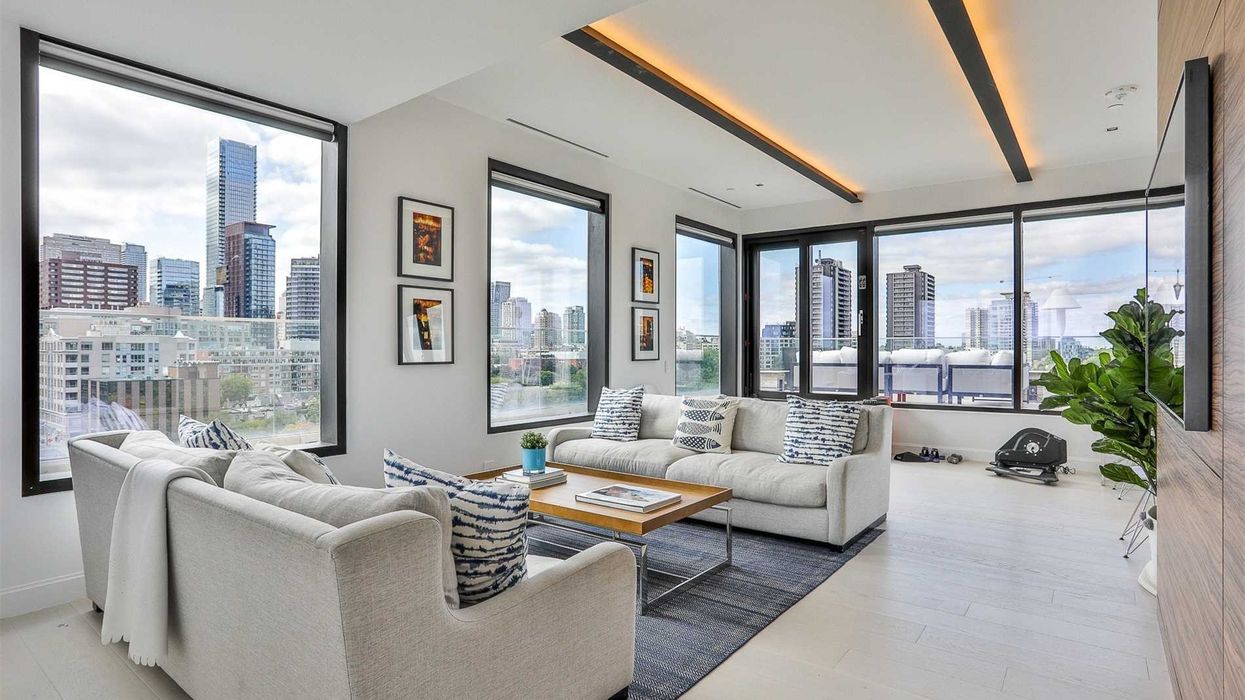Those who grew up during the heyday of Toronto's suburban building boom likely share some common memories of visiting a friend's home. After being whisked past the pristine living room, slowing enough to steal a glance at the displayed china in the dining room, you arrived at the one place in the house where your sticky fingers were welcome: The family room.
The comfortable couches, water-marked end tables, and of course the TV, all made you feel right at home. Kids loved the fact they could make a mess. Parents loved how that mess was contained.
But we're no longer tethered to our TVs to watch a movie or play a video game. Square footage is at a premium in prime Toronto locations, and many a popular pundit has decried how technology is leaving family togetherness in tatters. So does that mean the family room is an architectural anachronism?
The answer is yes — and no.
"A space that's really given over to the family might be what we traditionally called a den," says Lorne Rose, a Toronto-based architect who's been designing living spaces since the mid-1990s. "A modern family room is often going to be at the back of the house, adjacent to the kitchen, with no dividing walls, leaving it open to the kitchen."
Rose says it's not so much that the family room has disappeared, rather it has evolved. What is disappearing in modern homes, according to the architect, are more formal and traditional living spaces.
"A traditional dining room might be used at Christmas or Easter or during Jewish holidays when the whole family is over. But many people are thinking, 'Why take up that space with a room we only use once or twice a year?'"
It's a sentiment echoed by home buyers. When Elaine Stavnitzky was hunting for a home in the GTA last year, she had a number of things on her "must-have" list. An extra bathroom was near the top. A formal dining room was not.
"I find a formal dining room is just not necessary. I can even speak for our neighbours — they recently remodeled to get rid of theirs. It's the kind of room that you only use when guests come over. It really just takes up space."
Stavnitzky, a busy working mom to two preteens, grew up in a home with traditional room spaces. But she says her family needs something different.
"I've always thought an open concept made more sense. One person can be cooking dinner, the kids can be at the table doing homework, or someone can be on the couch watching TV."
Rose says it isn't that his clients don't want room for the family, it's just designed differently than in decades past. Even with a TV as an anchor within a space, new technology allows people to be together in new ways.
"Typically we're living more casually. We might have the kids' friends and their families over. You might have the guys in the area with the TV watching football, the kids might be sitting in another part of the room playing a video game on the floor, the moms might be in the kitchen talking or watching a YouTube video,” he says. “The open space allows people to be in separate areas, while still maintaining a sense of connection."
Not that a little breathing room isn't a good thing. Stavnitzky says her husband wouldn't mind another room, just to get away from the noise. While the home they settled on does have recreational space upstairs where they can send visiting children, the grownups tend to stay on the ground floor.
Rose says one solution for people who don't want separate formal living and dining rooms but still want a little extra space is to take what might have just been a single-function formal room and put it to use in different ways.
"People might choose a room that can serve as a dining room for larger family functions, but can also be a place to get away for some privacy. We might put a seat, a couch or two chairs under a front bay window if someone wants to have a quiet cocktail or conversation. Then you just move the seating out of the way if you want to open up the table for a lot of guests."
While Stavnitzky would love to have another multipurpose room, she says there's a real upside to her current space.
"I clean my own home. I'm really glad I ended up with three bathrooms, even when I have to clean them. But if you have a room you're not using, it's just collecting dust."





















